Abstract
A concurrent-chains procedure was used to examine pigeons' preferences between segmented and unsegmented terminal-link schedules of reinforcement. During the initial link, a pair of independent, concurrent variable-interval 60-s schedules was in effect. In the terminal link, reinforcement was provided by a chain fixed-interval fixed-interval schedule on one key and by a simple fixed-interval schedule with an equal interreinforcement interval in the other. The relative duration between the first and second components (segmentation ratio) in the terminal-link chained schedule was systematically varied while the terminal-link duration was kept constant at either 15 s or 30 s in two sets of conditions. With few exceptions, the simple schedule was preferred to the chained schedule. Furthermore, this preference was inversely related to the size of the segmentation ratio in the segmented schedule. When the segmentation ratio was smaller than 1:1, preference was more extreme for a 30-s condition than for a 15-s condition. However, preference decreased more rapidly in conditions with the longer terminal-link duration when the ratio increased. Taken together, these results were consistent with previous findings concerning the effect of the terminal-link duration on choice between segmented and unsegmented schedules. In addition, the data suggested that segmentation ratio in a segmented schedule constitutes another potent factor influencing preference for the unsegmented schedule.
Keywords: preference, segmentation ratio, interreinforcement interval, segmented schedules, psychological distance, concurrent chains, pigeons
Full text
PDF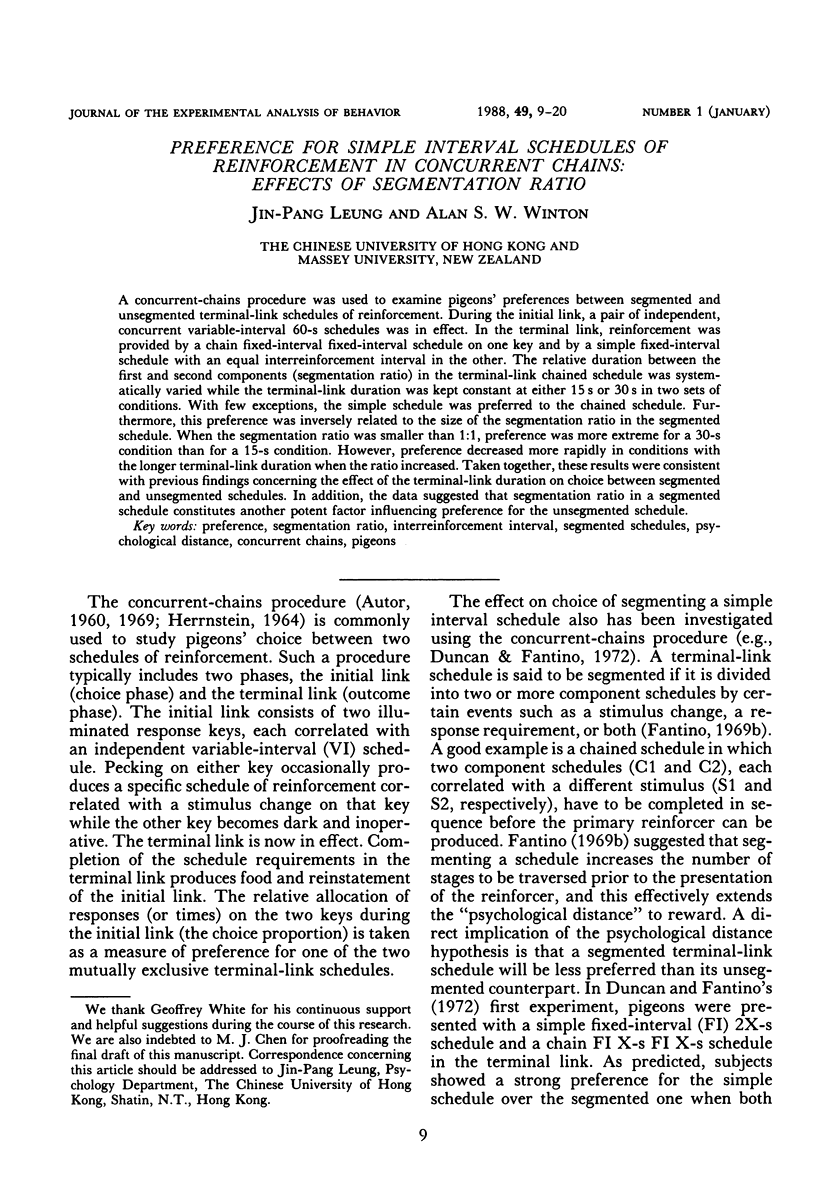
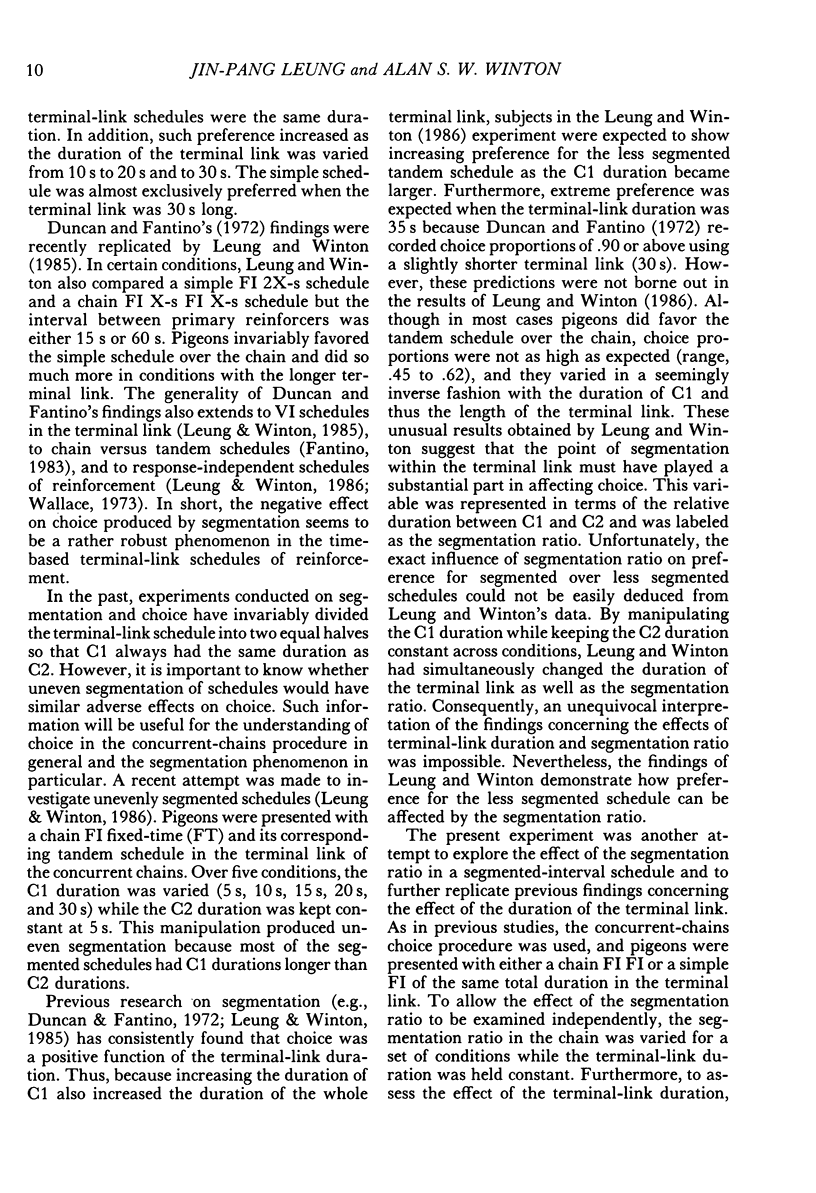
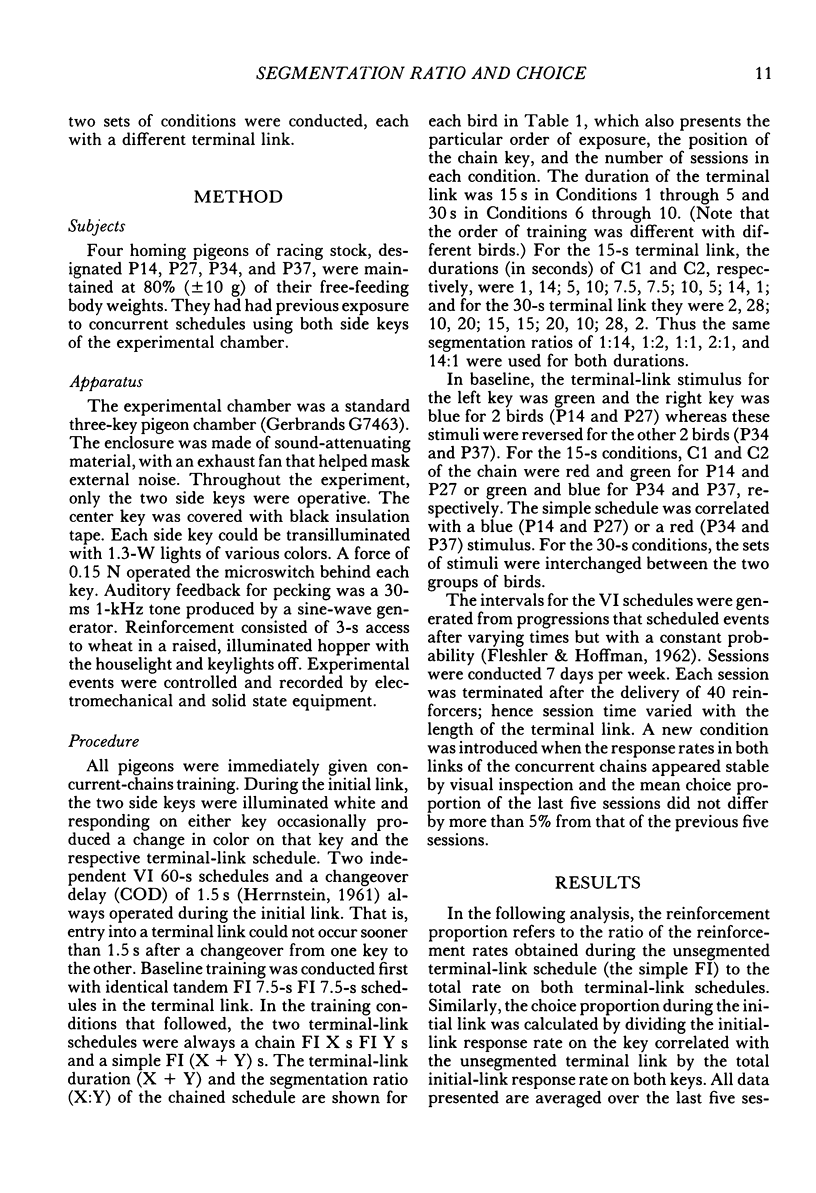
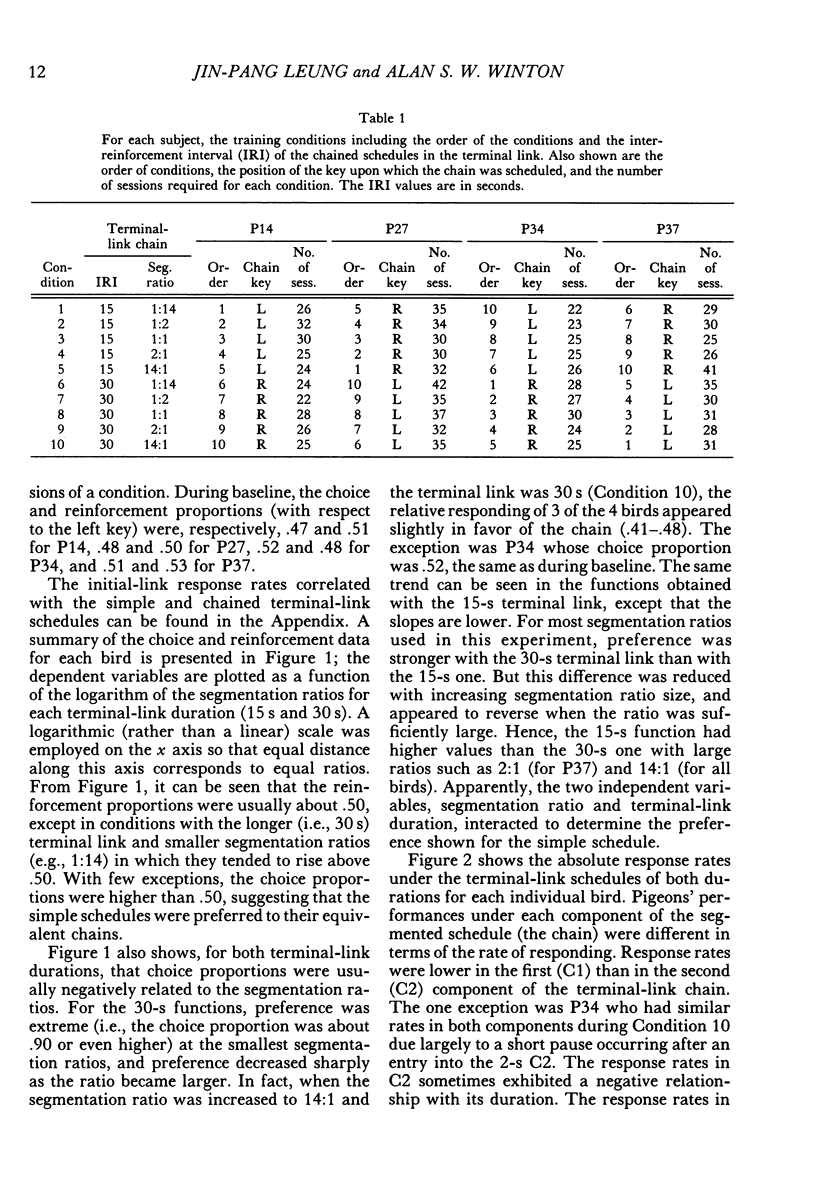

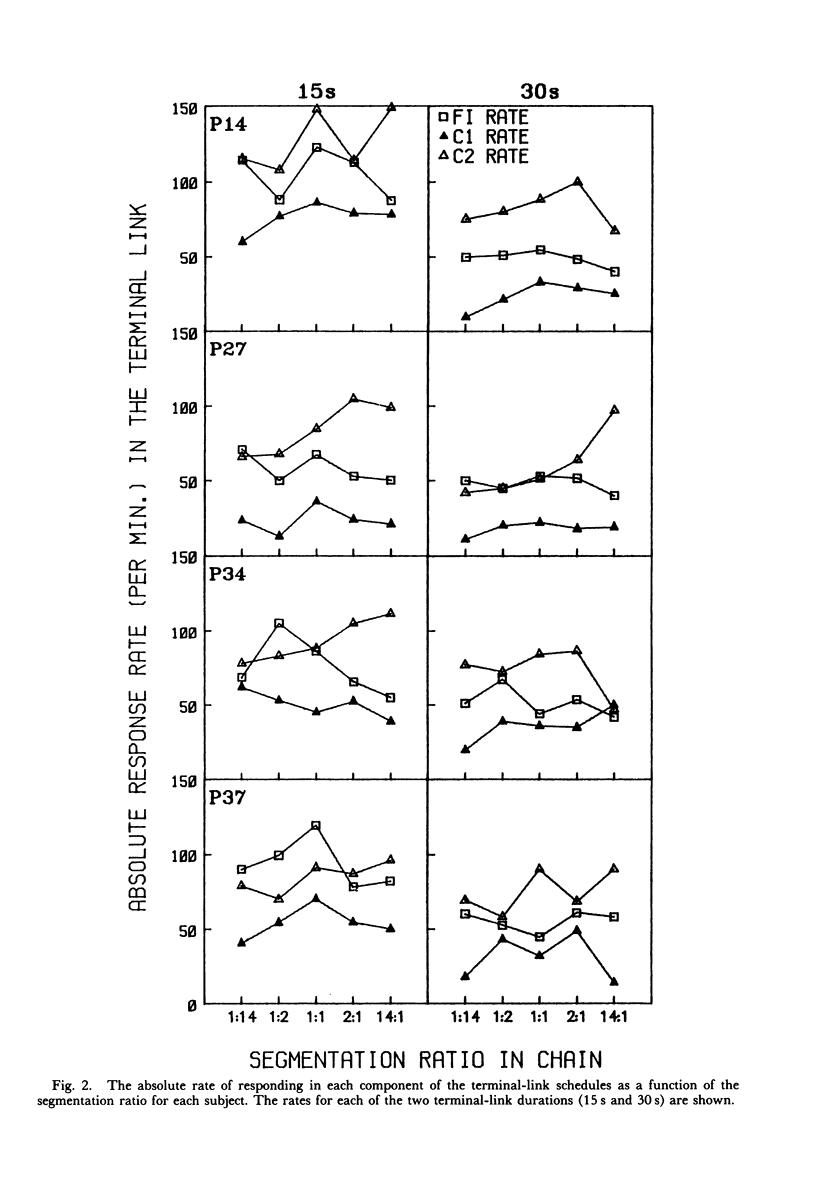
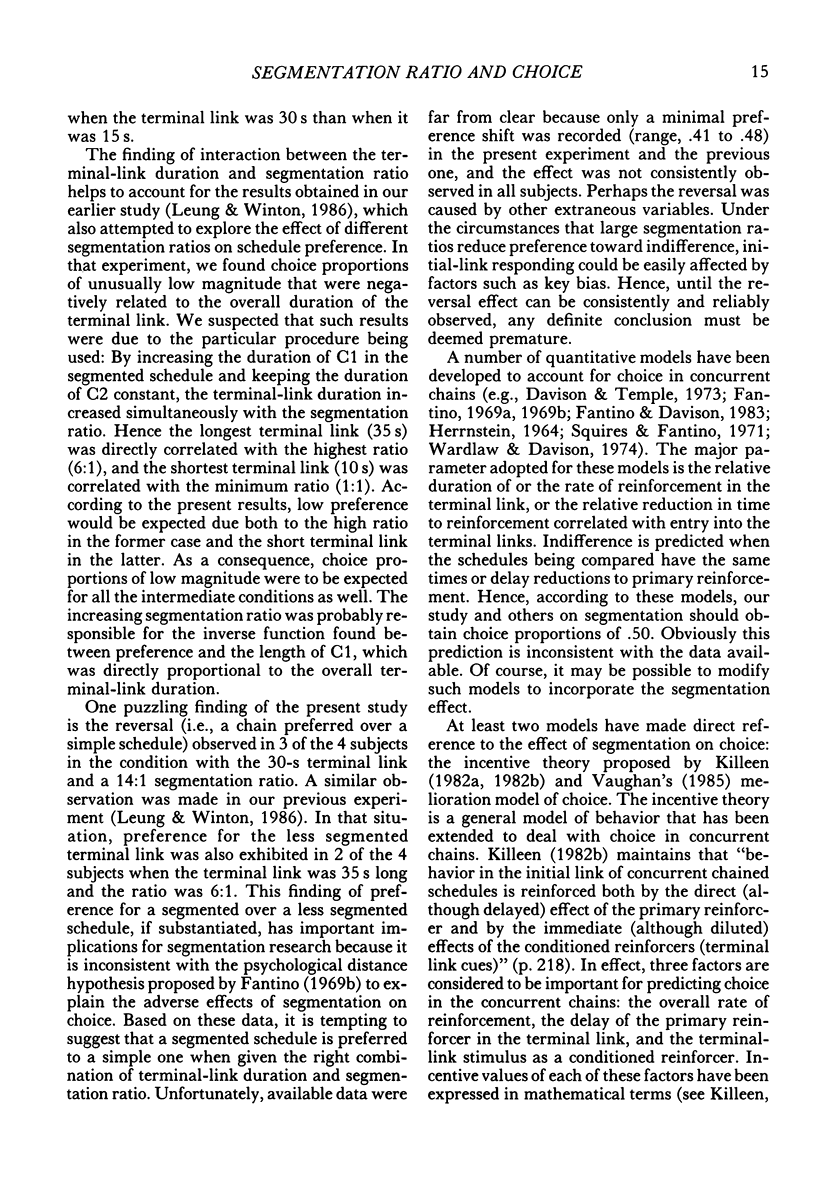
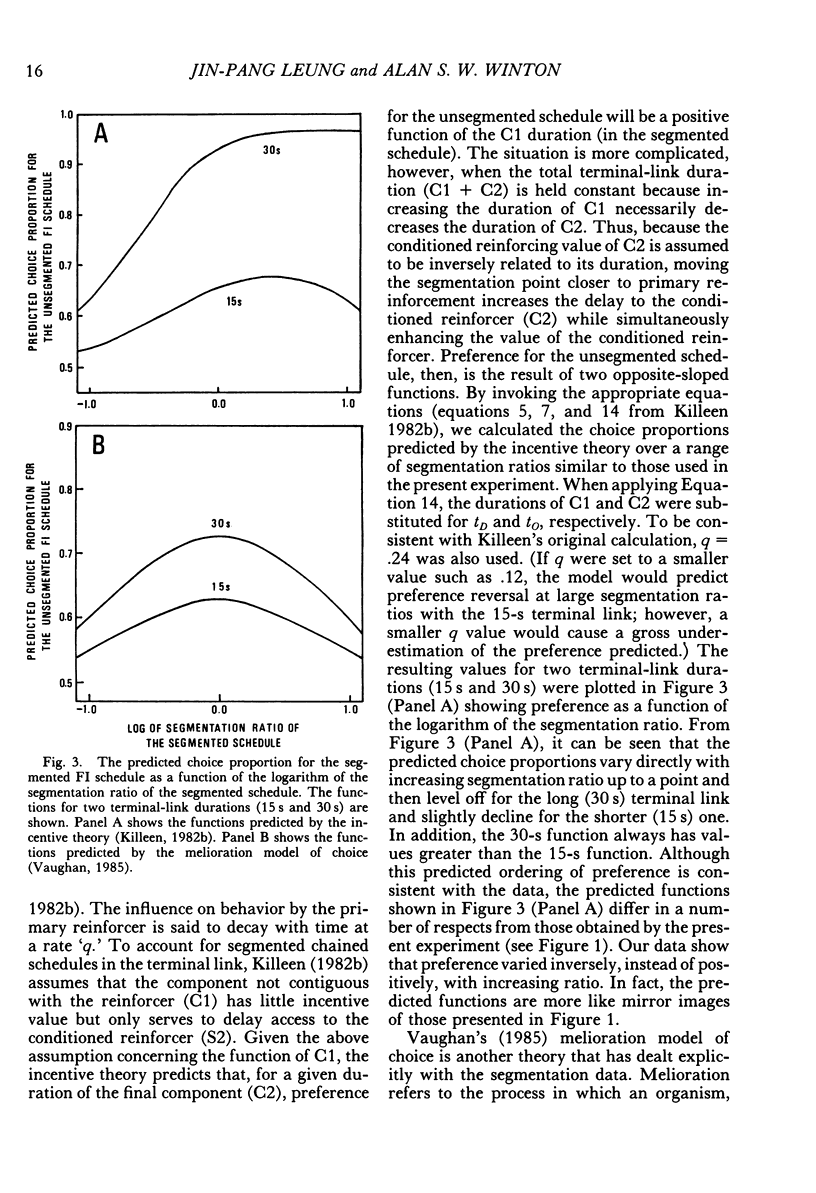
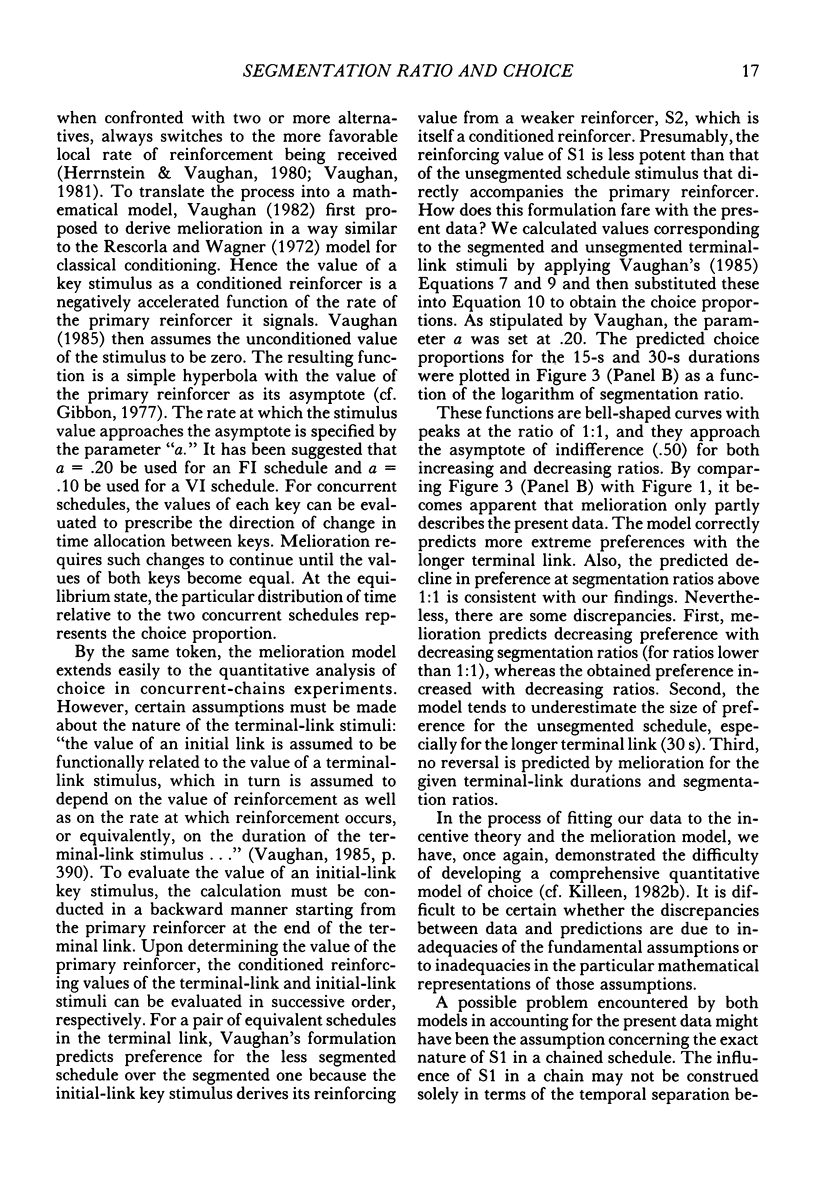
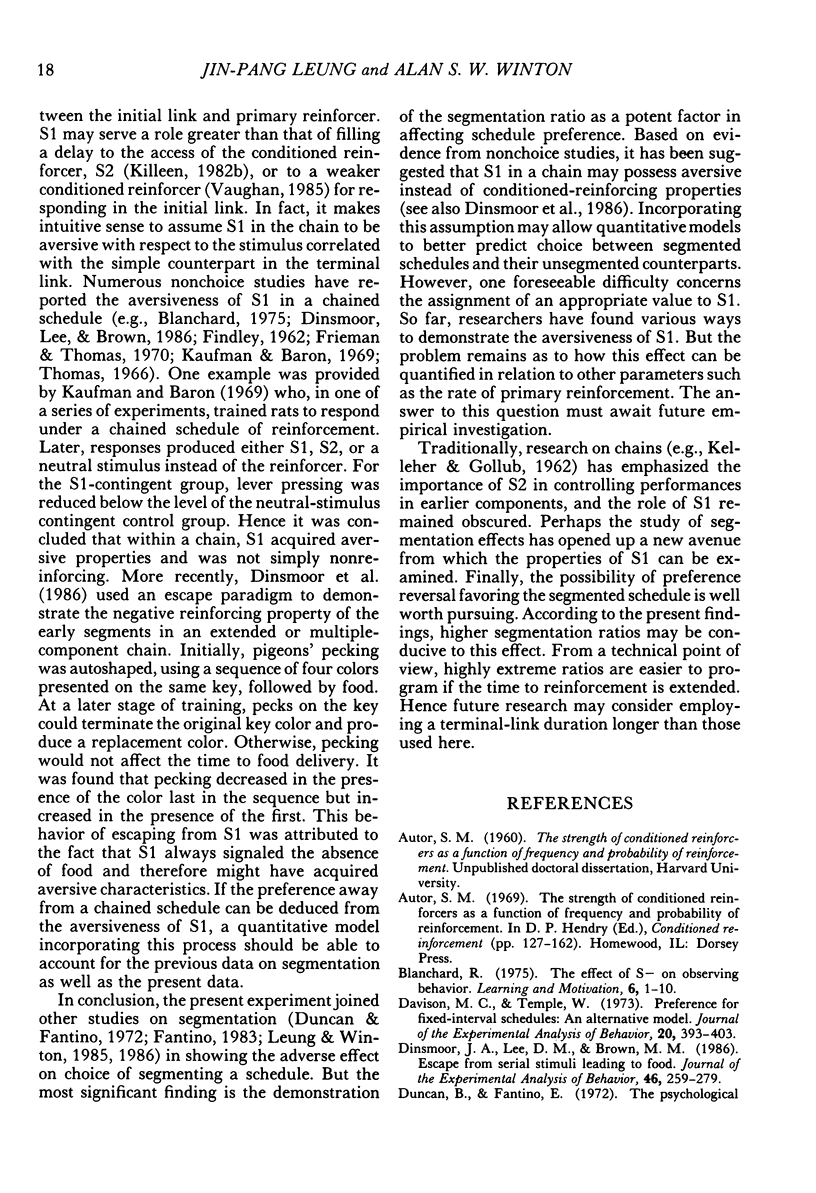
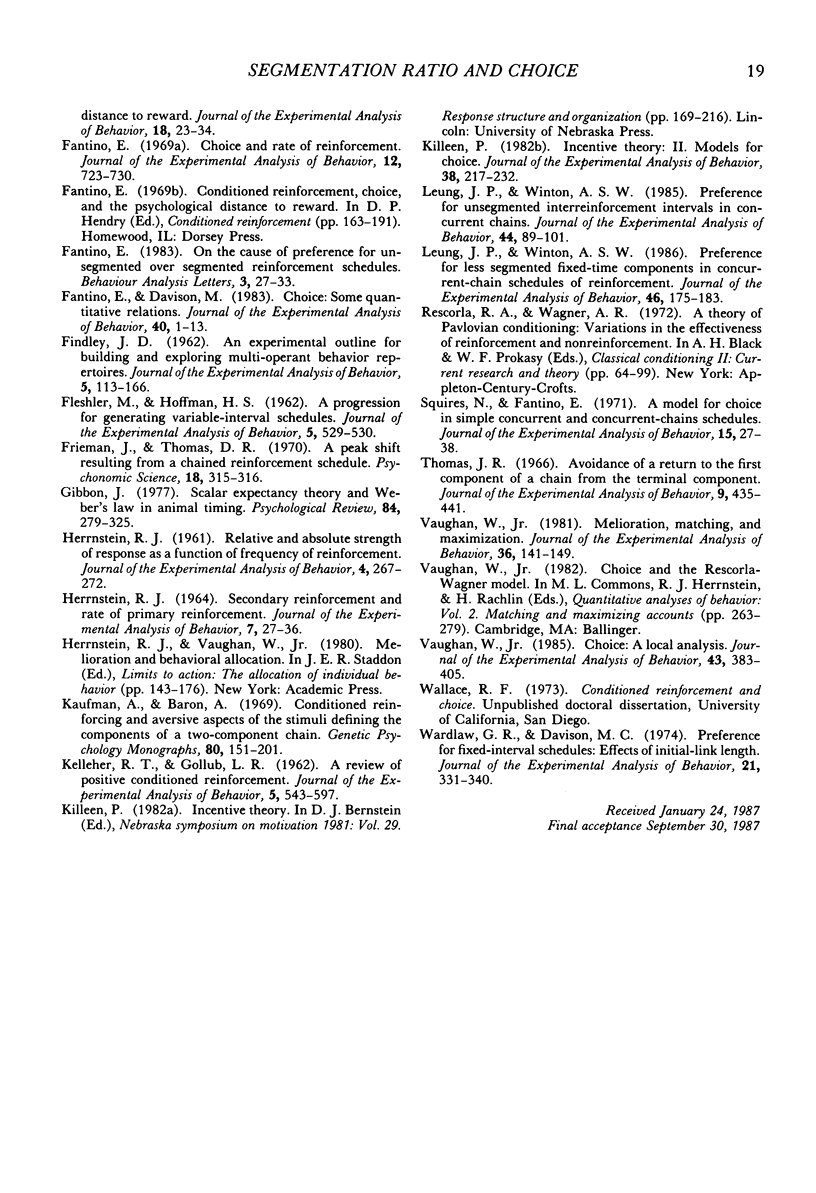
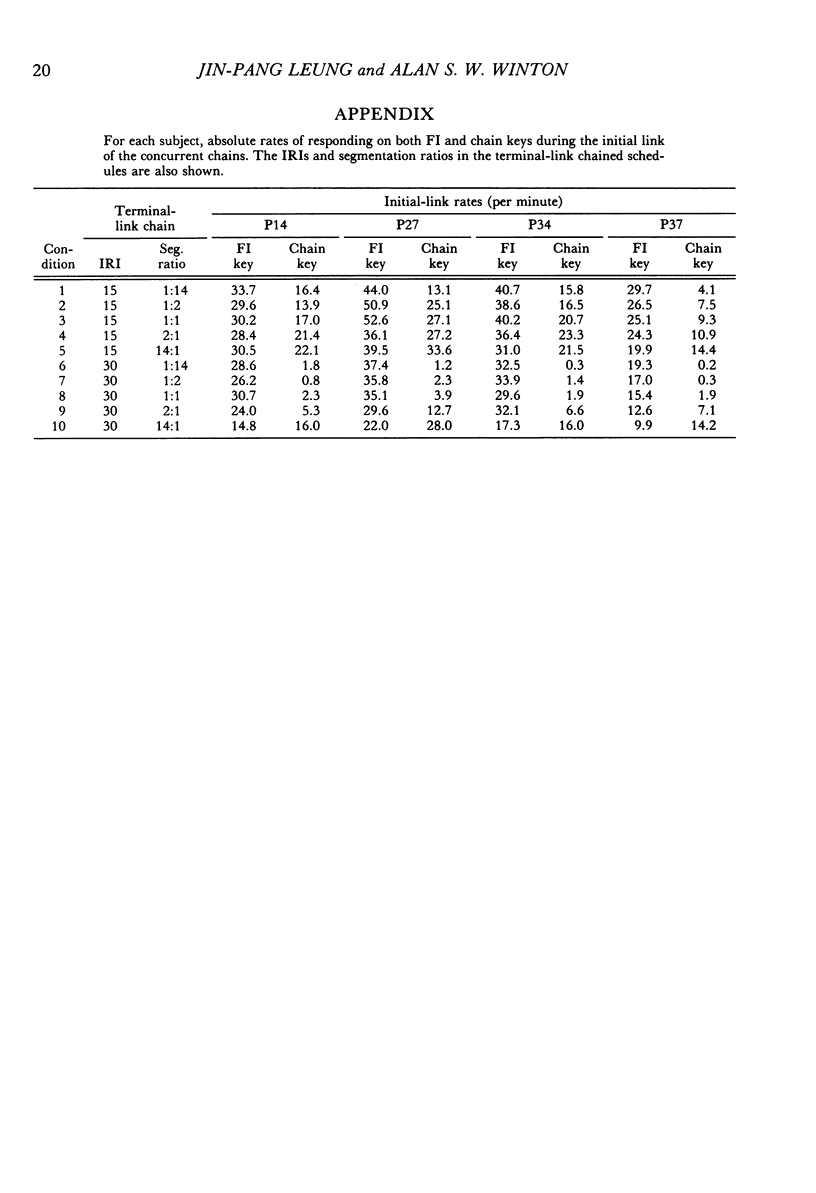
Selected References
These references are in PubMed. This may not be the complete list of references from this article.
- Davison M. C., Temple W. Preference for fixed-interval schedules: an alternative model. J Exp Anal Behav. 1973 Nov;20(3):393–403. doi: 10.1901/jeab.1973.20-393. [DOI] [PMC free article] [PubMed] [Google Scholar]
- Dinsmoor J. A., Lee D. M., Brown M. M. Escape from serial stimuli leading to food. J Exp Anal Behav. 1986 Nov;46(3):259–279. doi: 10.1901/jeab.1986.46-259. [DOI] [PMC free article] [PubMed] [Google Scholar]
- Duncan B., Fantino E. The psychological distance to reward. J Exp Anal Behav. 1972 Jul;18(1):23–34. doi: 10.1901/jeab.1972.18-23. [DOI] [PMC free article] [PubMed] [Google Scholar]
- FINDLEY J. D. An experimental outline for building and exploring multi-operant behavior repertoires. J Exp Anal Behav. 1962 Jan;5(Suppl):113–166. doi: 10.1901/jeab.1962.5-s113. [DOI] [PMC free article] [PubMed] [Google Scholar]
- FLESHLER M., HOFFMAN H. S. A progression for generating variable-interval schedules. J Exp Anal Behav. 1962 Oct;5:529–530. doi: 10.1901/jeab.1962.5-529. [DOI] [PMC free article] [PubMed] [Google Scholar]
- Fantino E. Choice and rate of reinforcement. J Exp Anal Behav. 1969 Sep;12(5):723–730. doi: 10.1901/jeab.1969.12-723. [DOI] [PMC free article] [PubMed] [Google Scholar]
- Fantino E., Davison M. Choice: Some quantitative relations. J Exp Anal Behav. 1983 Jul;40(1):1–13. doi: 10.1901/jeab.1983.40-1. [DOI] [PMC free article] [PubMed] [Google Scholar]
- HERRNSTEIN R. J. Relative and absolute strength of response as a function of frequency of reinforcement. J Exp Anal Behav. 1961 Jul;4:267–272. doi: 10.1901/jeab.1961.4-267. [DOI] [PMC free article] [PubMed] [Google Scholar]
- HERRNSTEIN R. J. SECONDARY REINFORCEMENT AND RATE OF PRIMARY REINFORCEMENT. J Exp Anal Behav. 1964 Jan;7:27–36. doi: 10.1901/jeab.1964.7-27. [DOI] [PMC free article] [PubMed] [Google Scholar]
- KELLEHER R. T., GOLLUB L. R. A review of positive conditioned reinforcement. J Exp Anal Behav. 1962 Oct;5:543–597. doi: 10.1901/jeab.1962.5-s543. [DOI] [PMC free article] [PubMed] [Google Scholar]
- Killeen P. R. Incentive theory: II. Models for choice. J Exp Anal Behav. 1982 Sep;38(2):217–232. doi: 10.1901/jeab.1982.38-217. [DOI] [PMC free article] [PubMed] [Google Scholar]
- Leung J. P., Winton A. S. Preference for less segmented fixed-time components in concurrent-chain schedules of reinforcement. J Exp Anal Behav. 1986 Sep;46(2):175–183. doi: 10.1901/jeab.1986.46-175. [DOI] [PMC free article] [PubMed] [Google Scholar]
- Leung J. P., Winton A. S. Preference for unsegmented interreinforcement intervals in concurrent chains. J Exp Anal Behav. 1985 Jul;44(1):89–101. doi: 10.1901/jeab.1985.44-89. [DOI] [PMC free article] [PubMed] [Google Scholar]
- Squires N., Fantino E. A model for choice in simple concurrent and concurrent-chains schedules. J Exp Anal Behav. 1971 Jan;15(1):27–38. doi: 10.1901/jeab.1971.15-27. [DOI] [PMC free article] [PubMed] [Google Scholar]
- Thomas J. R. Avoidance of a return to the first component of a chain from the terminal component. J Exp Anal Behav. 1966 Jul;9(4):435–441. doi: 10.1901/jeab.1966.9-435. [DOI] [PMC free article] [PubMed] [Google Scholar]
- Vaughan W. Choice: A local analysis. J Exp Anal Behav. 1985 May;43(3):383–405. doi: 10.1901/jeab.1985.43-383. [DOI] [PMC free article] [PubMed] [Google Scholar]
- Vaughan W. Melioration, matching, and maximization. J Exp Anal Behav. 1981 Sep;36(2):141–149. doi: 10.1901/jeab.1981.36-141. [DOI] [PMC free article] [PubMed] [Google Scholar]
- Wardlaw G. R., Davison M. C. Preference for fixed-interval schedules: effects of initial-link length. J Exp Anal Behav. 1974 Mar;21(2):331–340. doi: 10.1901/jeab.1974.21-331. [DOI] [PMC free article] [PubMed] [Google Scholar]


